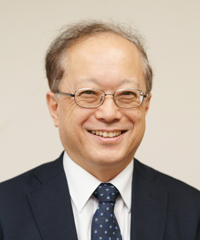I went to see an exhibition of the work of Kumagusu Minakata at the National Museum of Science and Nature in Ueno, Tokyo. Minakata did not make any great scientific achievements, but he was active as a natural historian in Japan, the United States and England during the Meiji era, and his name was widely known among those in the field of natural history at the time. I first learned about him from a high school history textbook. I remember coming across his name together with those of other figures in the Meiji era. Thinking that it was pronounced "Nampo," it struck me as a rather odd last name. I encountered his name again after I had become a doctor, and having developed an interest in the theory of evolution, had read Charles Darwin's famous work. I became acquainted with his work and achievements as those of a naturalist along with others like Darwin and Alfred Russel Wallace.
Minakata was known among the world's natural historians at the time for his studies of myths and folklore around the world. Writing at a time when most Western scholars were unable to read Chinese classics, he analyzed the commonalities of the myths and folktales around the world and published his studies in English in Nature and other science journals. He published 51 monographs in Nature, more than any Japanese author to the present day.
What I found so astonishing at the exhibition was his amazing thirst for knowledge. From the age of about eight, he began avidly reading Chinese classics and copying entire texts. While working as a curator at the British Museum in England, he continued copying documents and manuscripts that he found interesting, filling many notebooks with tiny, handwritten letters on subjects of interest. During an age when copy machines and the internet did not yet exist, there was no other way.
After returning to Japan, he changed his focus of study to slime molds, an organism that was relatively less studied by scholars, and by the time he died, he had completed several thousand illustrations with explanations in both Latin and English. His discovery of a new slime mold is one of his few "scientific achievements," as I have mentioned at the beginning. During this time, he did not publish illustrated catalogues of slime molds or articles in journals of botanical science. All his illustrations were kept at his home in Wakayama Prefecture.
The text accompanying Minakata's exhibition also asked why he continued to make so many illustrations of slime molds and never showed them publicly.
Actually, I have reason for bringing up Kumagusu Minakata, a subject of personal interest to me, as the topic here.
Groundbreaking research in Japan by Dr. Shinya Yamanaka which has resulted in the discovery of induced pluripotent stem (iPS) cells has been supported not only by the medical world, but also by the government. The government and private sector together have provided ample funding to establish a center for iPS research conducted by young, promising scientists. However, as we all know, one of the young researchers was found to have fabricated and falsified data used in a research paper on iPS cells.
Only the author knows the real motivation, but such misconduct has been attributed to the fact that young researchers are employed on fixed-term contracts, and the pressure to achieve research results that will ensure extended employment is said to have induced his wrongdoing.
Despite the shared engagement with scientific research, the motivation that drove Minakata and that of the young researcher are as different as night and day. To put it bluntly, the young researcher was doing research to produce results that would extend his research term and provide further sustenance.
Although there is a large difference in the scientific achievements of Minakata and Darwin, they have much in common. First of all, they were natural historians who were driven by the desire for knowledge throughout their entire lives. Minakata constantly looked for slime molds at home and in the nearby mountains. Darwin, even after achieving fame for his theory of evolution, continued to research earthworms in his garden until he died. In this sense, they seem to be very much alike.
Another major common feature is that neither of them ever worked for the purpose of earning money. (Darwin, however, seems to have received a wage when he circled the world as a member of the Beagle crew.) Due to the support of his father who was a doctor and his wife who was a member of the Wedgewood family, it was not financially necessary for Darwin to work. In the case of Minakata, his family was successful as a sake brewer and took care of his daily living and traveling expenses.
These circumstances most certainly were a significant factor that enabled both Minakata and Darwin to continue research freely.
Although it can't be helped that researchers have to consider how to make a living, comparing the difficult position of young researchers in Japan with the stances taken by Darwin and Minakata, we perceive a large gap in the motivation to conduct research and sigh at the difference.



 Yoichi Sakakihara
Yoichi Sakakihara










